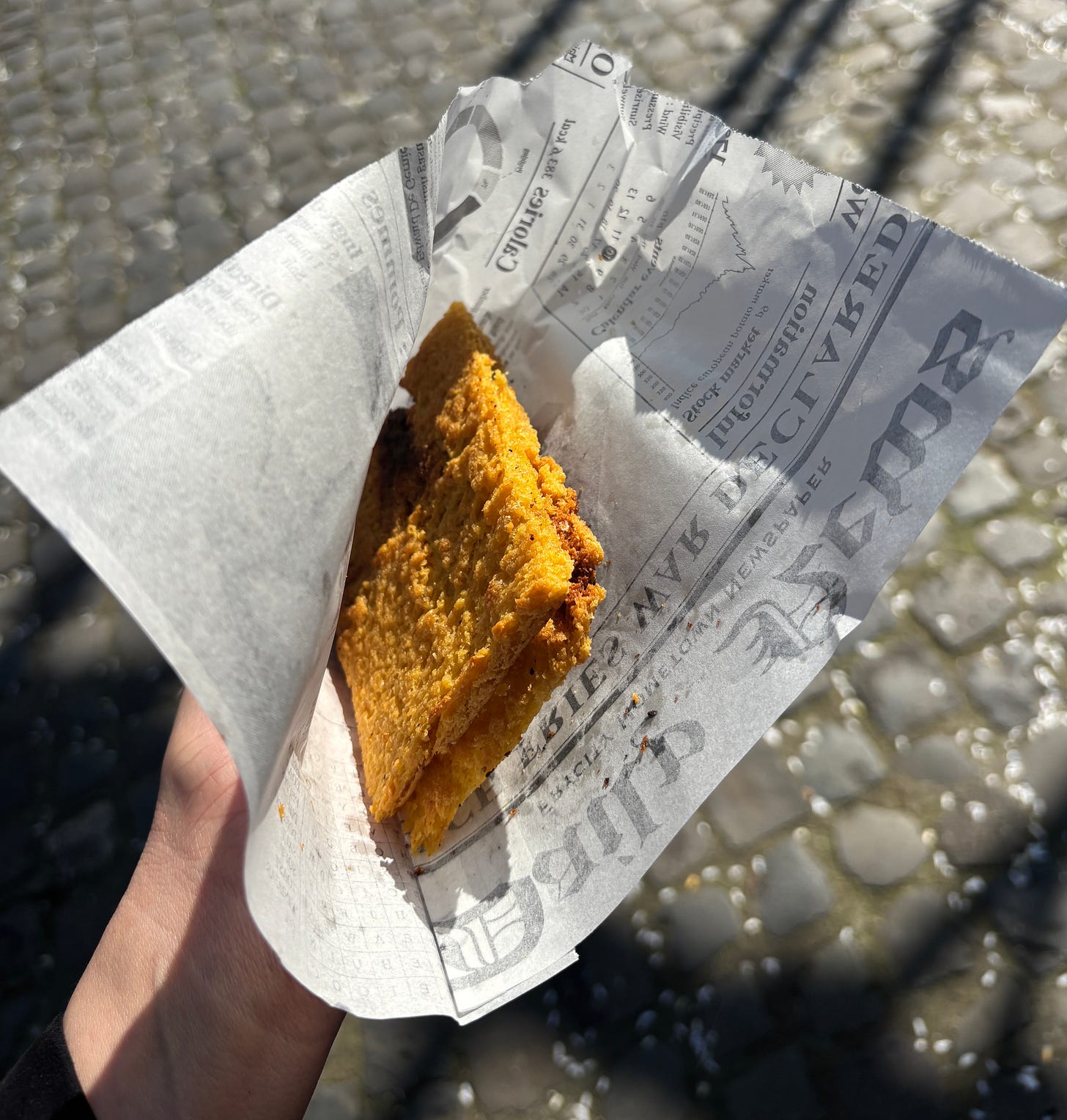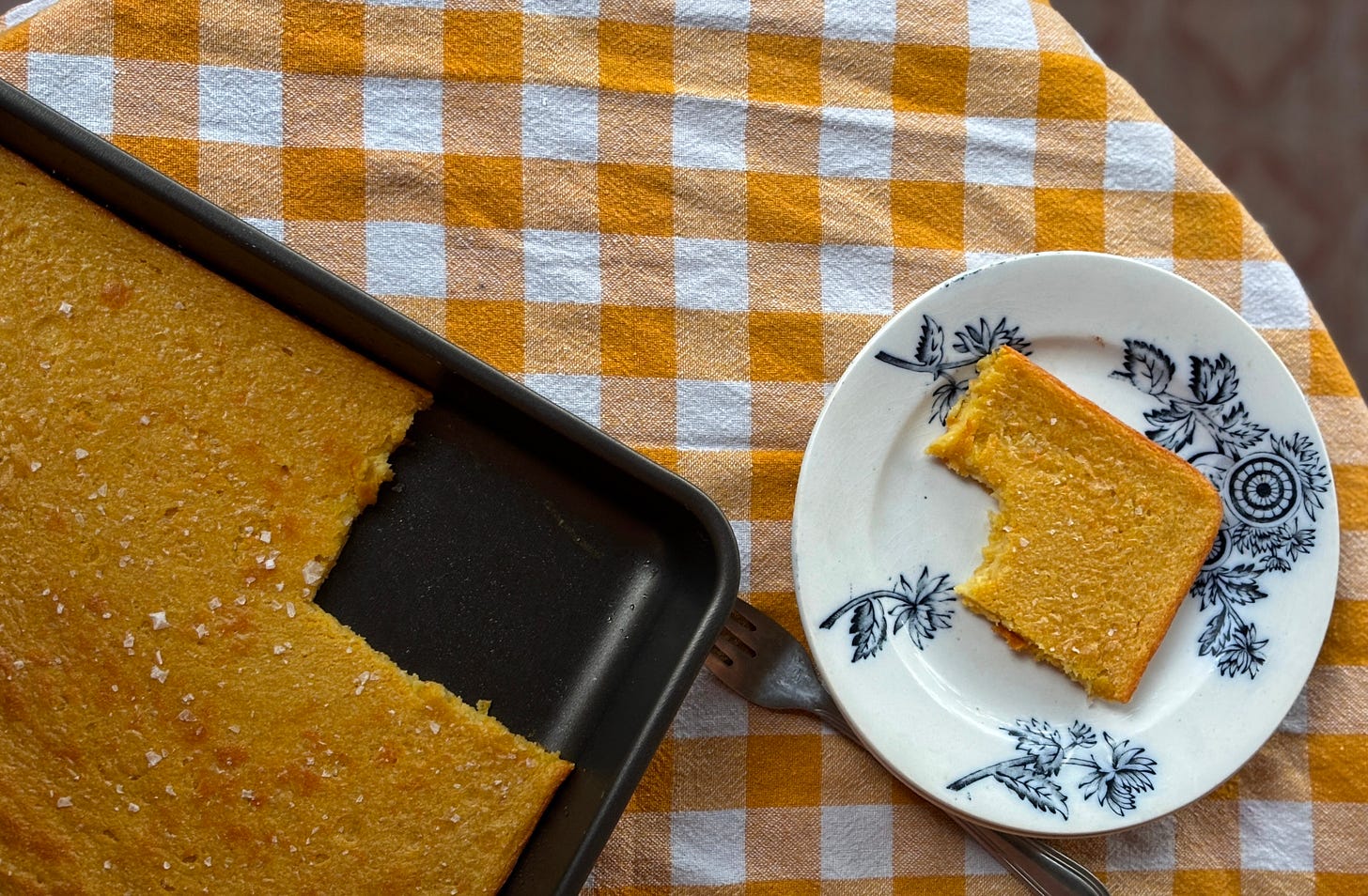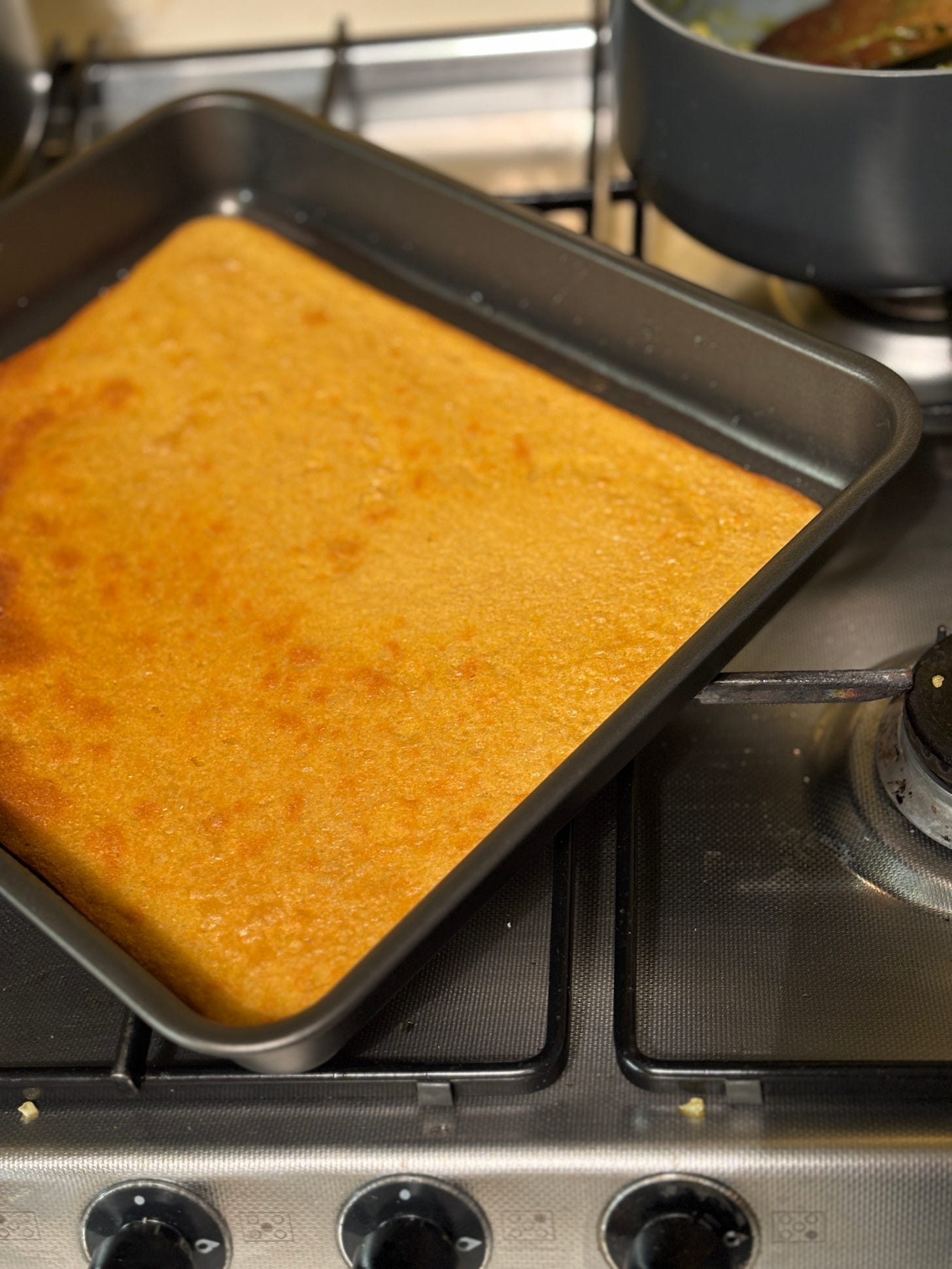Hi friends,
If you’ve been following us for a while, you know that we possess a nearly religious devotion to the humble, glorious chickpea (and this truly perfect method for cooking them), so it should come as no surprise that we also love to cook with chickpea flour whenever possible: it’s rich in fiber, protein, and flavor.
And, needless to say, this is no fringe theory: chickpeas and chickpea flour are cornerstones of many of the world’s greatest cuisines. In Algeria, karantika (chickpea flour baked with egg) is a beloved—and ubiquitous—street food. Dafina is a traditional slow-cooked chickpea stew originating from Jewish communities in Morocco. In India, you’ll find chickpea flour—also known as besan or gram flour—all over regional cooking: in the batter for pakora, whisked with herbs and spices for a batch of pudla (savory crepes), combined with yogurt to make a silky kadhi, or combined with spices and deep fried to make crispy, crunchy noodle-like sev. And on and on and on.
For today’s purposes, we’re focusing on a chickpea flour recipe found most often in Italy (farinata, torta di ceci), France (socca), Argentina and Uruguay (fainá) wherein it is mixed with water, allowed to sit, seasoned with salt and olive oil, and baked in a very hot oven until it’s crispy on the outside and a little custardy in the center. It’s as simple as simple could be, yet it feels a little bit revelatory every time we make it or eat it.
While in Rome with her family for a few months, Greta came across what is quite simply the best version of farinata she’s ever had. It is the work of Leo Cioni, a gifted chef who runs an incredible one-man restaurant called Sicché in the iconic covered market in Rome’s Testaccio neighborhood. Leo fell in love with cooking during a childhood spent watching his mother work magic in her kitchen, and his passion and thoughtfulness come through in every bite of his food. Six days a week he makes spectacular pots of beans, hearty, seasonal soups and his version of farinata—called torta di ceci in his native Tuscany—for the hungry crowds that descend on the market at lunch time (i.e. Greta, 4-5 times a week). Check it out below—and then, yes, do try this at home1.
Greta + Fanny
P.S. We’re including downloadable recipe files now! See below. It only took us 16 months to figure it out.
Keep reading with a 7-day free trial
Subscribe to The Green Spoon to keep reading this post and get 7 days of free access to the full post archives.










